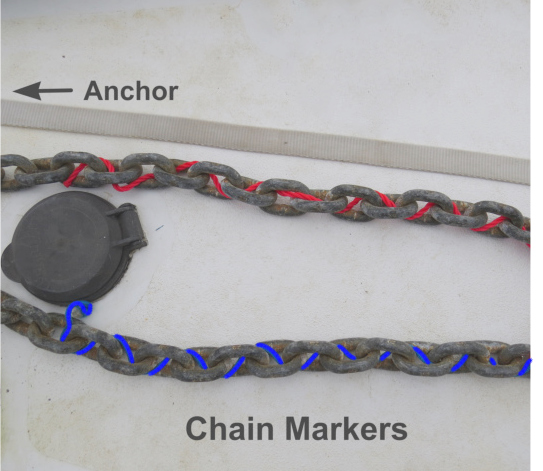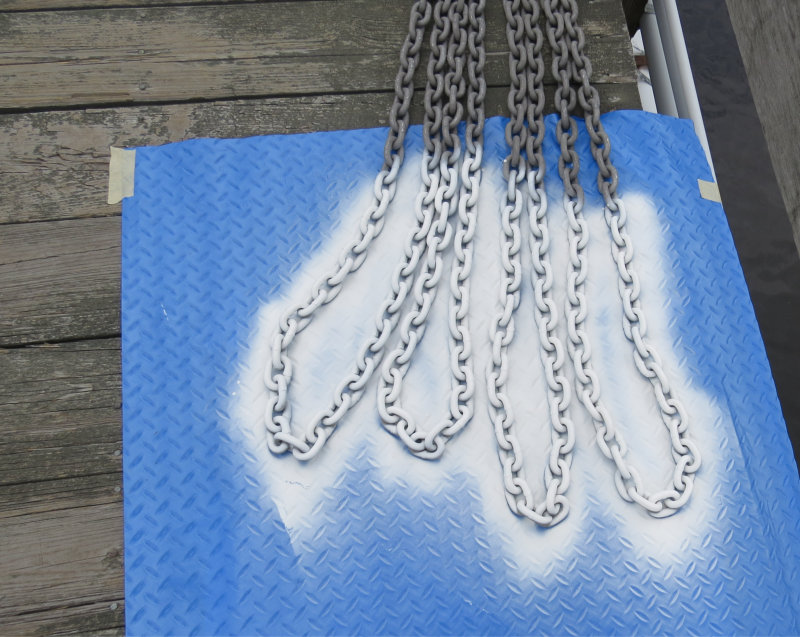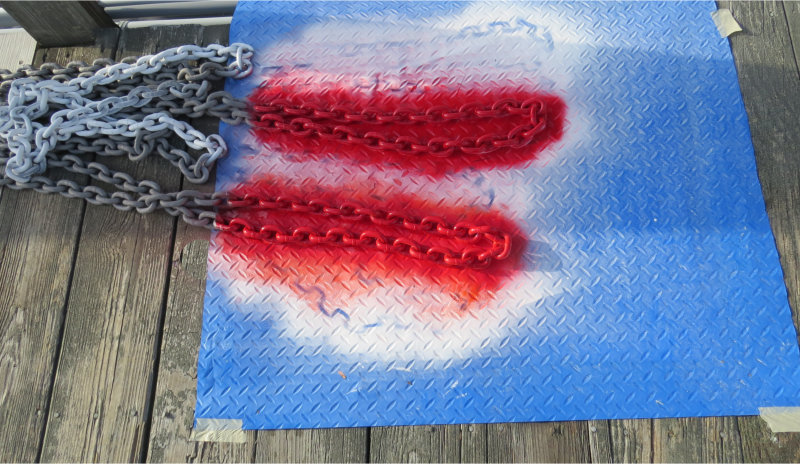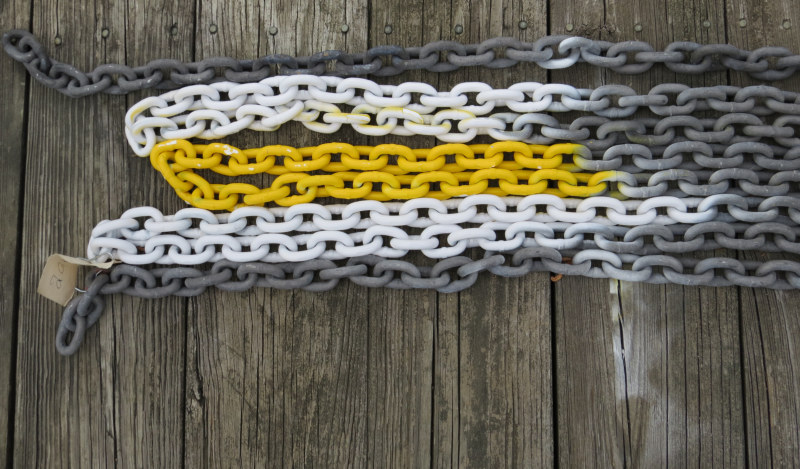Blue View - Painting the Chain
/Whether you have all rope, all chain, or a combination rope/chain, you need to know how much anchor rode has been deployed to ensure you have the correct scope. Some cruisers keep track by counting the seconds as the rode goes out or the rotations of the windlass, but this is a rough approximation at best … not to mention that it's easy to become distracted and lose count. Nine of Cups has a chain counter with a digital display that keeps track of how much chain or rope is out – and it often works. Our backup method, which is 100% reliable and almost foolproof, is to mark the rode in some fashion, so that the amount of anchor rode deployed is easily determined visually.
We just bought new chain. For the past 15 years, we've carried 300 feet of chain on our primary anchor, but it's unlikely we'll need to anchor in 75 feet of water in a coral atoll or the wilds of Tierra del Fuego anytime soon, so we reduced this to 200 feet, with another 200 feet of rope rode spliced onto the end. Over the years, we've tried several methods for marking our chain.
We once used different color cable ties. We found that if we didn't cut the tails off the cable ties after securing them to the chain, they sometimes got jammed in the windlass. If we shortened the tails, the rough cut edge would sometimes chafe the snubber. If we cut the tails flush, there wasn't enough cable tie to discern the color in less than bright sunlight, and it still had a tendency to chafe the snubber.
We have also marked chain by weaving different colored strands of polypropylene line into the links of the chain. This worked well, was easy to do, and usually inexpensive. When we've gone beachcombing in various parts of the world, we were amazed at how much polypropylene line washes ashore. I would keep short sections of the color du jour for later use.
Most often, however, we've marked sections of the chain with paint, which works quite well and lasts a long time if done properly. Since we were currently moored at a boatyard with the chain all stretched out nicely on the dock, and with a Home Depot and Lowes just down the street, this method seemed the best.
Most spray paints are alkyd and oil-based paints, and won't adhere well to galvanized chain. Acrylic latex based paints, on the other hand, do adhere to galvanized surfaces, but Krylon H2O spray paint is the only acrylic latex top coat paint I know of that comes in a spray can and is somewhat difficult to find. The alternative is to prime the area to be painted first with a latex-based primer such as Zinsser Bullseye 1-2-3. This is a water-based primer that can be over-painted with alkyd or oil-based paints, and is even in spray cans.
We like to have a mark every 25 feet. We paint a 2-3 foot section of chain at each 25 foot interval using different colors so we know at a glance how much chain is out. When we had 300 feet of chain, our color system was more complicated, but now that we have reduced our chain to 200 feet, we've simplified the system. To make it easy to remember, we use red, white and blue to mark 25 feet, 50 feet and 75 feet respectively. The 100 foot mark is painted yellow, then the red, white and blue is repeated. Our assumption is that even our feeble old minds can figure out that if we see a red paint stripe after two minutes of dropping chain, we've probably deployed 125 feet and not 25 feet.
This is the process we use to get the longest lasting results:
I stretch the chain out on the dock or in an appropriate place in the boatyard in loops, so that each of the 25 foot lengths are alongside each other. Once this is done, the chain must be degreased and cleaned whether it is fresh from the galvanizer or has been used for a few years. I start with a bucket or spray bottle of degreaser and a deck brush and go over each section that will be painted. I rinse it well, then use a general purpose cleaner to remove any dirt (or sea life if the chain was previously used). I rinse well one more time and let it dry – usually overnight.
Next, I tape a painter's plastic drop cloth or a tarp underneath the sections that will be painted. I prefer to use cans of spray paint rather than trying to paint the chain with brushes. Whether I am priming first or using an acrylic latex topcoat, the process is the same. I paint one side of the chain, wait the recommended re-coat time, then spray on a second coat. Since the rows of chain are usually quite close together, I use a section of cardboard to shield the chain lying next to the one being painted. After the re-coat time, I roll the chain over and apply two coats to the other side of the chain. If I am using a primer, I repeat the process with the topcoat paint.
I let the paint dry thoroughly – preferably a week or more - before feeding it back into the chain locker.
Make sure you pay attention to any overspray and the wind direction. You certainly don't want blue or red paint blowing onto your neighbor's boat, and the marina won't be happy if you repaint their dock or power pole.
Rope rode spliced onto the chain







